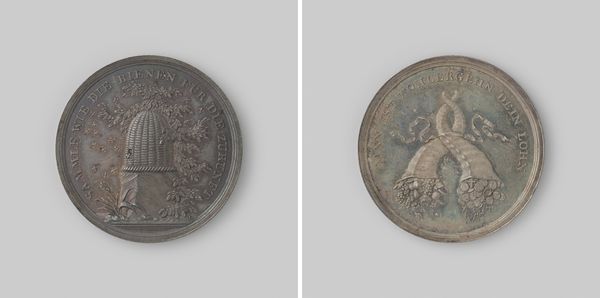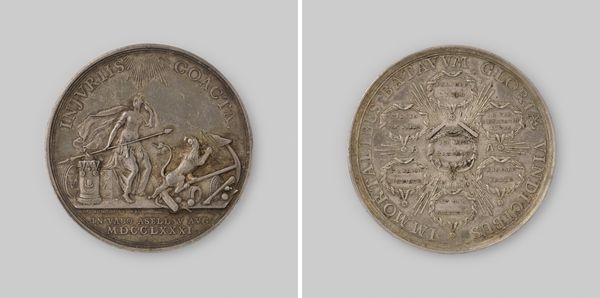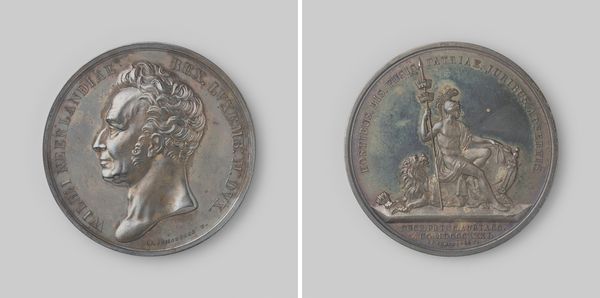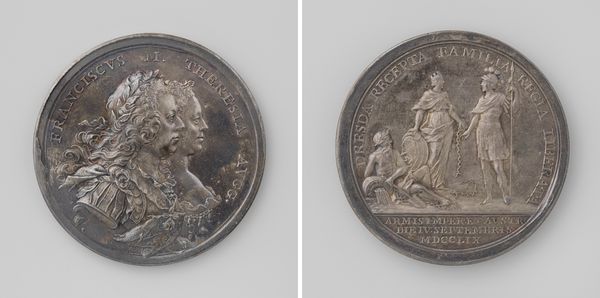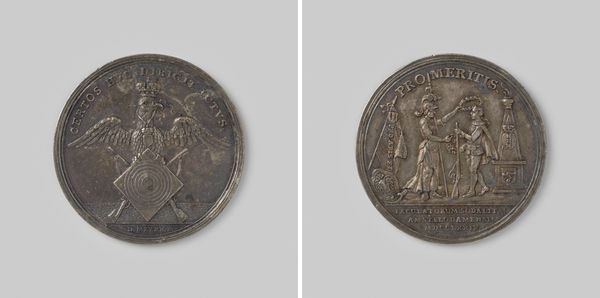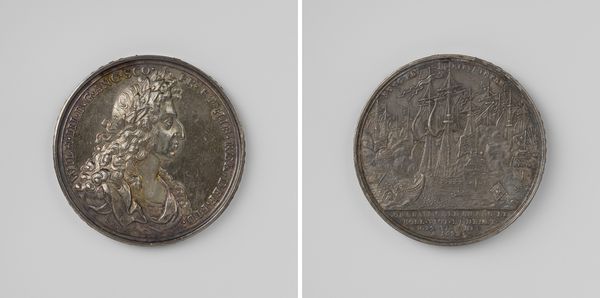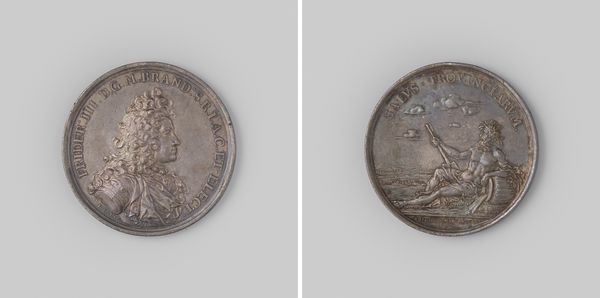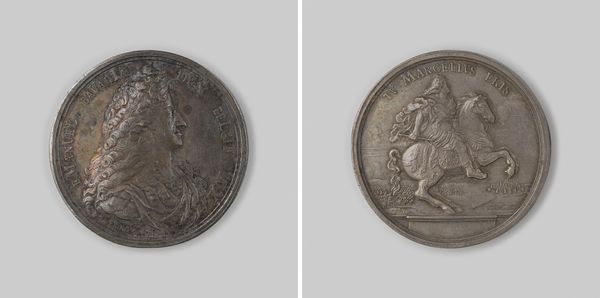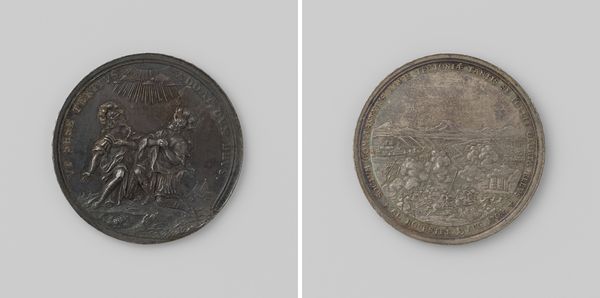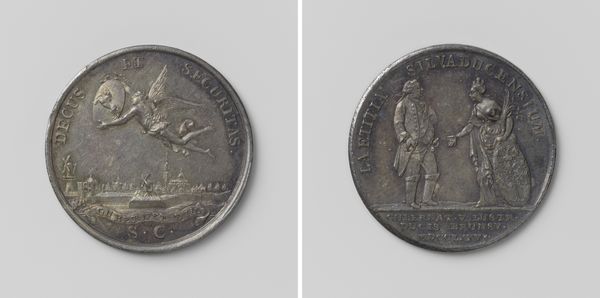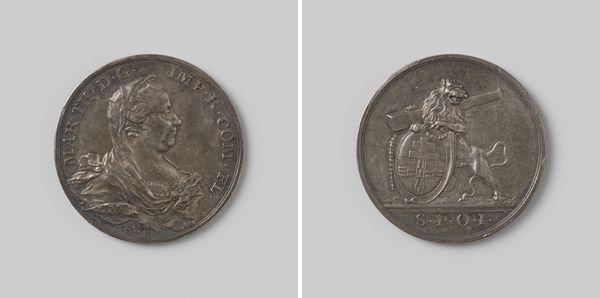
Copyright: Rijks Museum: Open Domain
This silver medal commemorating the marriage of Prince Willem V was created by Gijsbert van Moelingen in the Netherlands. Such mementos served as political tools, reinforcing social hierarchies by celebrating the union of powerful figures. Notice the busts of Willem V and his bride, Wilhelmina of Prussia, dominating one side. The inscription wraps around them, emphasizing their status. Flip to the other side, and you see symbols of Dutch national identity: allegorical figures, heraldic devices, and inscriptions evoking prosperity. This medal connects personal events to the political stability of the Dutch Republic. The symbols and inscriptions are carefully chosen to communicate specific ideas about the prince’s role and the nation's identity. The medal reinforces the idea of hereditary leadership, but historians can dig deeper, examining period documents, political pamphlets, and other artworks to explore how such imagery functioned within Dutch society. By understanding the context, we reveal the medal’s power as a tool for shaping public opinion and social norms.
Comments
No comments
Be the first to comment and join the conversation on the ultimate creative platform.
